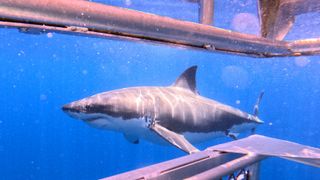Animals
Explore Animals
Editor's Picks
Latest about Animals

Watch bioluminescent algal blooms trigger electric-blue waves off San Diego coast in stunning new footage
By Elise Poore published
Mesmerizing footage from a new PBS Nature show captures the bioluminescent beauty of brilliant blue waves crashing along San Diego's coast.

Most complete Tasmanian tiger genome yet pieced together from 110-year-old pickled head
By Sascha Pare published
Researchers working with Colossal Biosciences have assembled a near-complete Tasmanian tiger genome and developed artificial reproductive technologies that could help de-extinct the species.

Ghostly white giant worms appear to be reproducing under the seafloor where tectonic plates meet
By Sascha Pare published
Researchers have discovered enormous tube worms and other creatures thriving in cavities beneath the seafloor on the East Pacific Rise, an ocean ridge near the Galápagos Islands.

Female gibbons 'vogue' and dance like robots — and make sure they have an audience
By Olivia Ferrari published
Female gibbons appear to do robot dances for attention, scientists discover.

13 crafty ways animals hunt their prey
By Elise Poore last updated
Spiders swinging lassos, ants setting deadly traps and turtles with deceiving tongues — these animals have the most cunning methods of hunting their prey.

New DNA findings shed light on Tsavo's infamous man-eating lions
By Elise Poore published
Scientists extract DNA from hair embedded in the Tsavo lions' jaws that reveals the species of prey they ate while they were alive.

Never-before-seen head of prehistoric, car-size 'millipede' solves evolutionary mystery
By Sierra Bouchér published
The fossil showed unique stalked eyes and centipede-like characteristics.

Why do cats 'chatter'?
By Victoria Atkinson published
Some cats chatter, oftentimes when they see prey. But why?

Scientists accidentally find deep-sea 'jelly' creatures merged into 'single entity' after injury, revealing bizarre new behavior
By Harry Baker published
Researchers discovered that some comb jellies can fuse their bodies together when injured. The unique adaptation, which involves merging their nervous systems and stomachs, has never been seen in any other species.
Sign up for the Live Science daily newsletter now
Get the world’s most fascinating discoveries delivered straight to your inbox.




